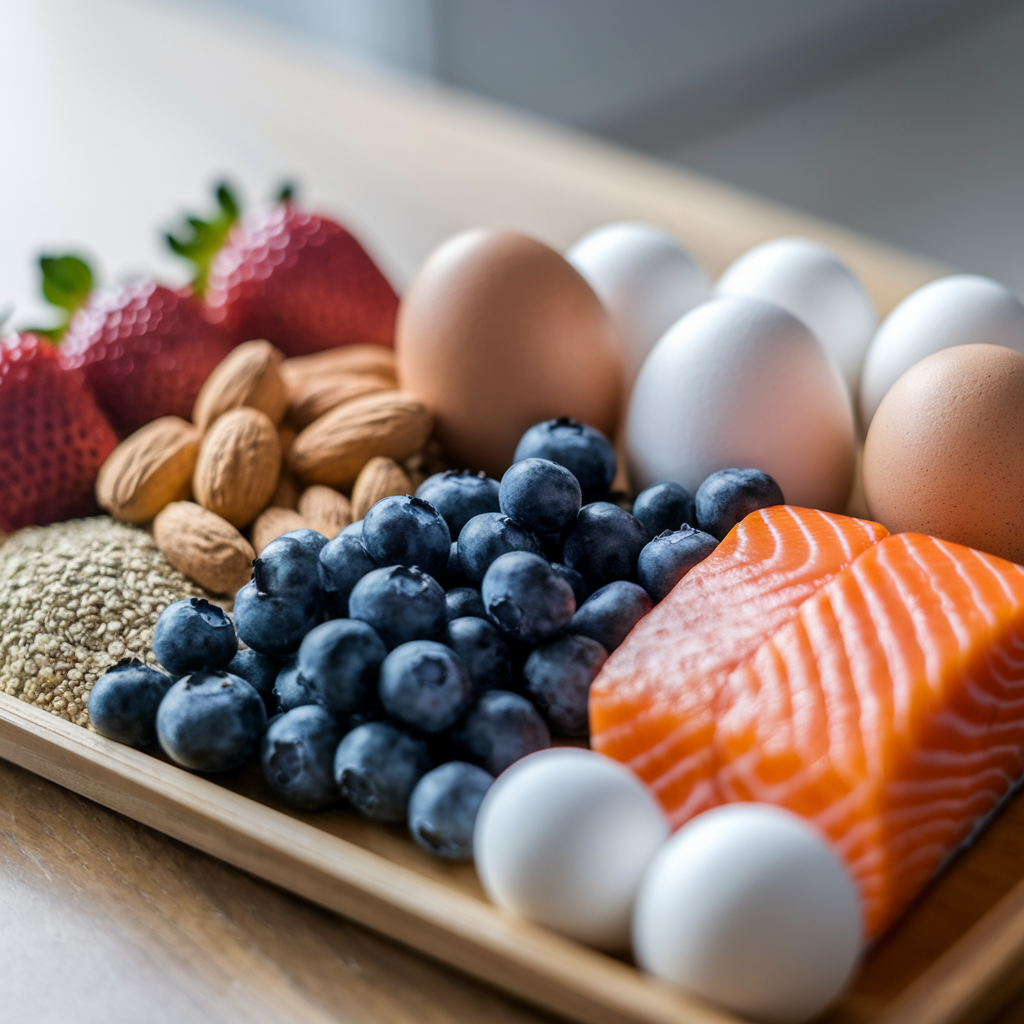Balanced nutritious eating is more than a temporary trend—it’s a long-term lifestyle that fuels your body with real, whole foods. When you prioritize balanced nutritious eating, you gain better energy, sharper focus, improved digestion, and a stronger immune system. This guide explains what makes eating habits balanced, how they benefit every system in your body, and what steps to take to begin eating better today. Whether you’re looking to maintain a healthy heart or simply eat more mindfully, balanced nutritious eating is the foundation.
For more guidance, explore our Ultimate Guide to Healthy Eating.
Essentials of Balanced Nutritious Eating
Key Nutrients for a Balanced Diet
Balanced nutritious eating centers around a complete mix of macronutrients and micronutrients. Every meal should include:
- Proteins – for building and repairing muscles.
- Complex Carbs – like brown rice and oats, for steady energy.
- Healthy Fats – from nuts, seeds, or olive oil for heart and brain health.
- Vitamins and Minerals – from fresh fruits and vegetables to support immunity and metabolism.
This approach keeps your meals satisfying and nutrient-dense. For more tips on building a plate, see What Is a Balanced Diet?.
Why Protein, Carbs & Fats Must Coexist
To truly practice balanced nutritious eating, every macronutrient must have a role on your plate. Meals lacking protein or healthy fats often leave you unsatisfied or low on energy. Combining legumes, whole grains, and olive oil creates a sustainable and filling dish. Learn how to make better protein choices in our Tips for Choosing Healthy Proteins.oosing Healthy Proteins.
Nutrition & Heart Health

Omega-3s and Healthy Fats for Heart Support
Balanced nutritious eating has a direct impact on your cardiovascular system. Omega-3 fatty acids—found in salmon, sardines, and flaxseed—are proven to lower inflammation and support a regular heart rhythm. Replacing saturated fats with heart-healthy fats is a key strategy for protecting your arteries and overall heart function.
Learn more in our Benefits of Omega‑3 from Sardines & Tuna.
Leafy Greens and Antioxidants That Protect
Dark leafy greens are essential for any balanced nutritious eating plan. Spinach, kale, and arugula provide antioxidants that reduce oxidative stress and support better cholesterol levels. Combined with foods high in vitamin C or healthy oils, leafy greens contribute to optimal heart performance. Discover recipes in our Best Heart-Supporting Salad Recipes.
Cutting Processed Foods

How to Reduce Sugars and Artificial Additives
Balanced nutritious eating means reducing foods that drain your energy and damage long-term health. Processed snacks, sweetened drinks, and artificial flavors can cause weight gain, inflammation, and fatigue. Switch to natural sweeteners and cook from scratch whenever possible. See our Healthy Sugar Alternatives Guide for simple swaps.
Cooking Smart with Natural Ingredients
Using real ingredients is key to balanced nutritious eating. Homemade meals give you control over sodium, sugar, and fat content. Instead of store-bought sauces or instant noodles, use fresh vegetables, whole grains, and healthy oils. For examples, visit our No-Added-Sugar Recipes.
Foods That Boost Immunity

Citrus, Ginger & Garlic for Immune Support
Balanced nutritious eating not only improves energy—it strengthens your body’s natural defense system. Foods like oranges, lemons, and grapefruits provide high levels of vitamin C, which boosts white blood cell production.
Ginger and garlic are immune powerhouses too. Both have antimicrobial and anti-inflammatory properties that help your body fight infections naturally. Incorporate them into your soups, teas, and stir-fries to enhance your daily meals. Learn how in our Ginger & Garlic Tea Recipe.
Fermented Foods for Gut and Immune Health
A vital but often overlooked part of balanced nutritious eating is gut health. Fermented foods like kefir, yogurt, sauerkraut, and miso are rich in probiotics—friendly bacteria that keep your digestive system strong and help your immune cells work effectively.
Regular consumption of these foods balances your gut microbiome, reduces bloating, and supports overall well-being. See more in our article on the Benefits of Kefir & Natural Yogurt.
Frequently Asked Questions
1. What are the essentials of balanced nutritious eating?
Balanced nutritious eating involves consuming a variety of whole foods that provide protein, complex carbs, healthy fats, and vital vitamins. It means eating in moderation, staying hydrated, and avoiding overly processed products.
2. How does balanced nutritious eating support heart health?
It reduces saturated fat and sodium intake, while increasing foods rich in omega-3s, fiber, and antioxidants—such as fatty fish, leafy greens, and nuts. These nutrients lower cholesterol and support stable blood pressure.
3. How can I reduce processed foods and improve my diet?
Start by reading labels, avoiding added sugars, and preparing meals at home. Use natural ingredients like olive oil, whole grains, and fresh produce to gradually replace processed snacks and convenience foods.
4. Which foods are best for boosting immunity?
Vitamin C-rich fruits (like citrus), garlic, ginger, and fermented foods (like kefir and sauerkraut) strengthen the immune system by fighting inflammation and supporting gut health.
Conclusion
Balanced nutritious eating isn’t a short-term fix—it’s a lifestyle that empowers your body and mind. By choosing whole foods, balancing macronutrients, staying hydrated, and avoiding additives, you give your body exactly what it needs to thrive. The beauty of this approach is its simplicity: no complicated diets, no extreme restrictions—just real food, in the right portions, every day.
Start small. Swap one processed snack for a fruit. Choose water over soda. These changes add up, and soon, you’ll feel the difference in your energy, clarity, and overall health.
Want more meal ideas and expert tips? Explore our Ultimate Guide to Healthy Eating and start building better habits today.
Print
Balanced Nutritious Eating: Your Ultimate Guide to a Healthier, Happier Life
- Total Time: 20 mins
- Yield: 1 bowl
Description
This Salmon Quinoa Power Bowl is a perfect example of balanced nutritious eating—packed with omega-3s, whole grains, fiber, and vibrant vegetables for sustained energy and heart health.
Ingredients
1 cup cooked quinoa
1 salmon fillet (4–5 oz), grilled
½ avocado, sliced
½ cup steamed broccoli
¼ cup shredded carrots
1 tablespoon olive oil
1 teaspoon lemon juice
Salt and pepper to taste
Instructions
1. Cook quinoa according to package instructions and let cool.
2. Grill the salmon fillet and season with salt, pepper, and lemon juice.
3. Steam broccoli and slice avocado.
4. In a bowl, layer quinoa, salmon, avocado, broccoli, and carrots.
5. Drizzle olive oil over the top.
6. Serve immediately as a nutrient-rich meal.
Notes
You can substitute salmon with grilled tofu for a vegetarian version.
Add pumpkin seeds for extra crunch and omega-3s.
- Prep Time: 10 mins
- Cook Time: 10 mins
- Category: Main Dish
- Method: Grilled
- Cuisine: American

